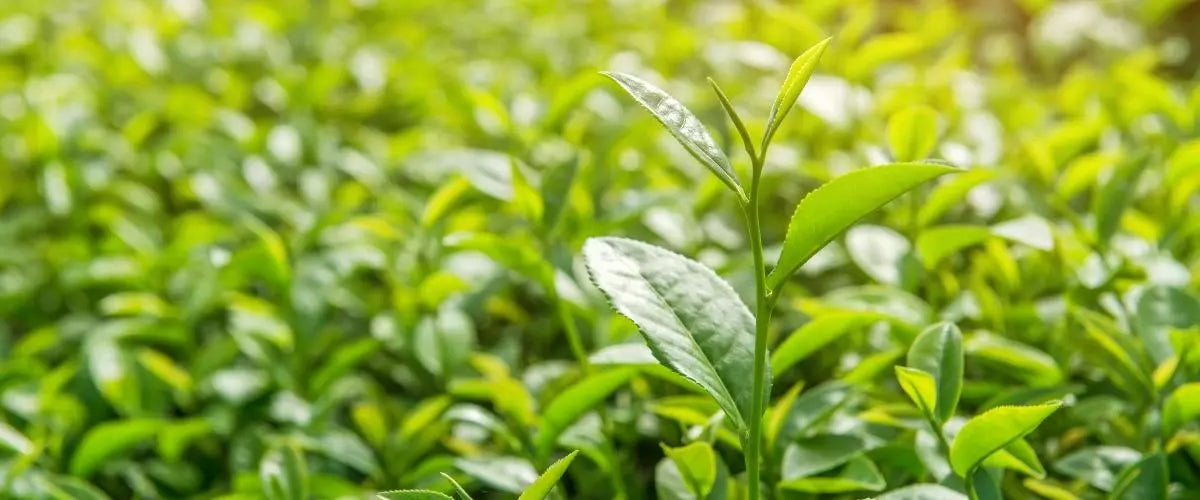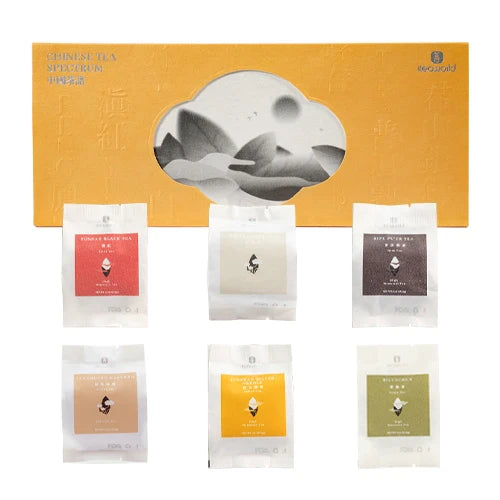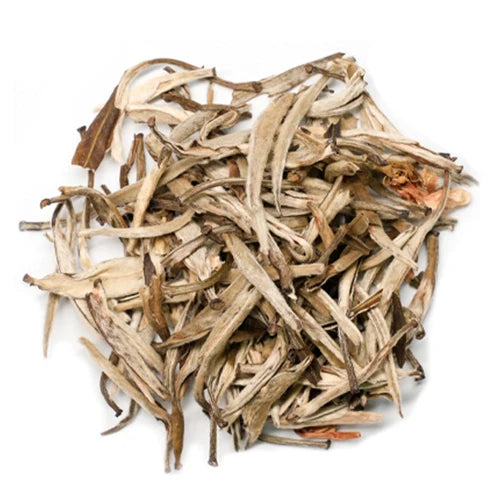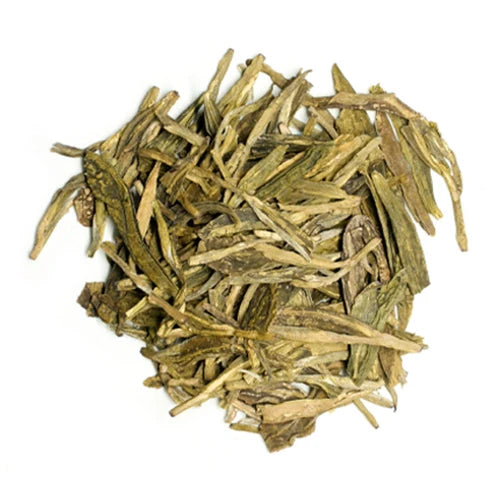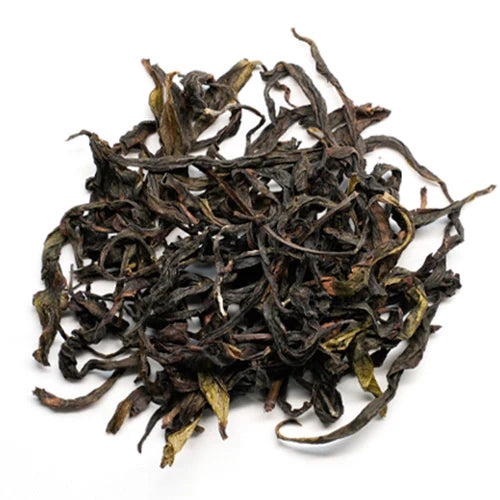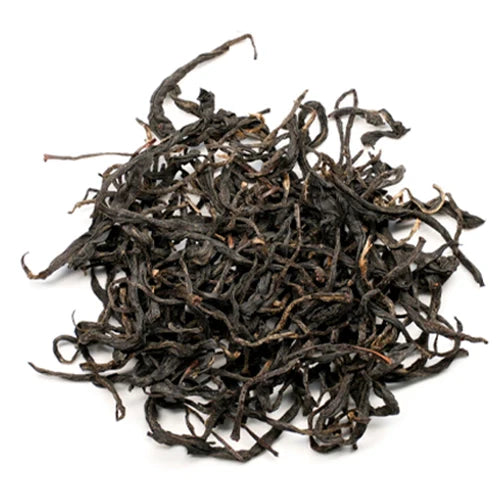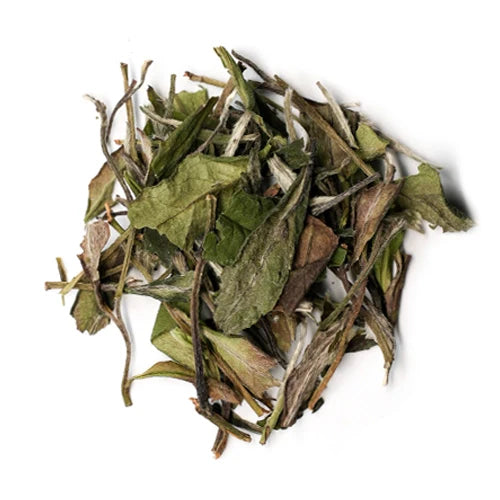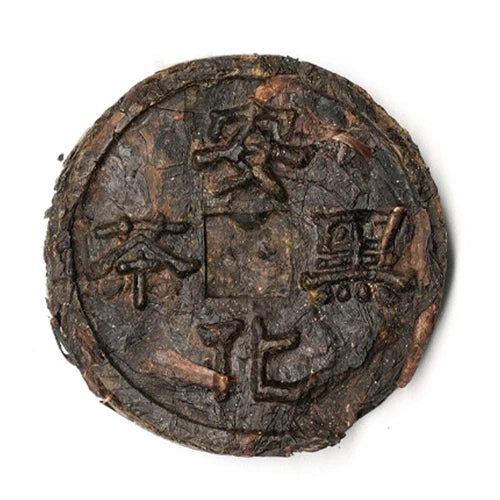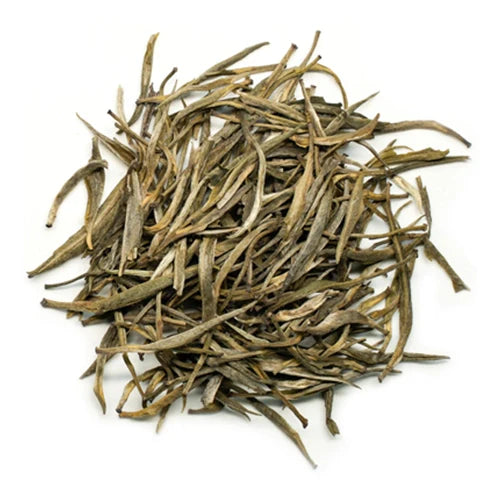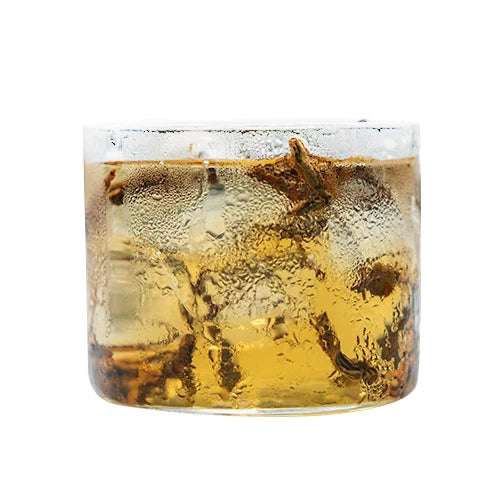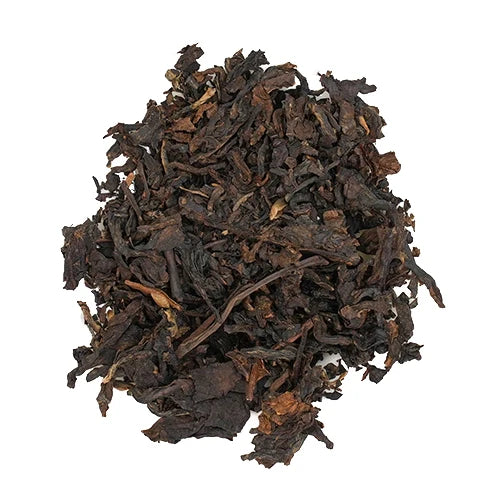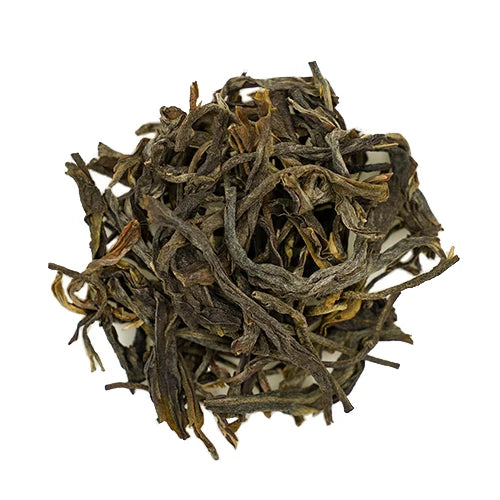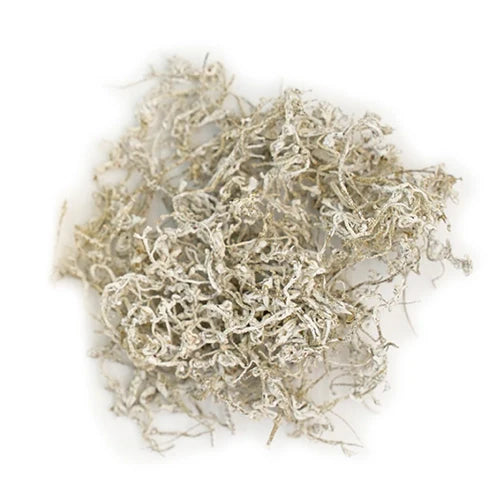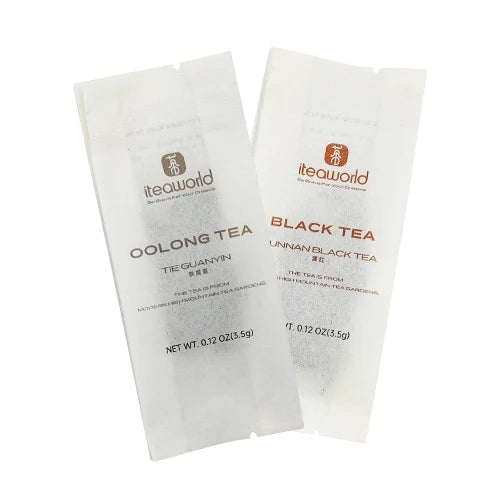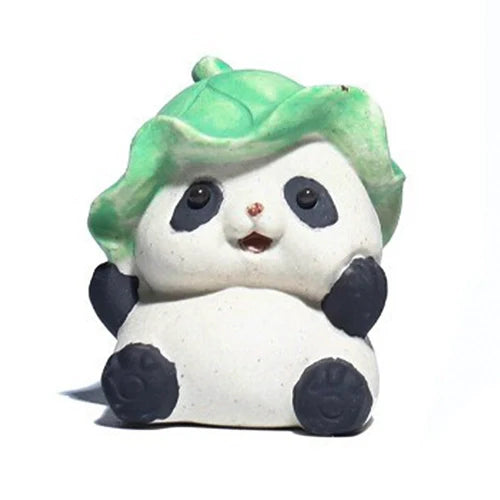Longjing tea has a history that goes way back, all the way to the Tang Dynasty in China. There was this famous tea connoisseur named Lu Yu, who wrote the world's first book all about tea called The Classic of Tea.
In it, he mentioned that tea was grown in the Tianzhu and Lingyin temples near Hangzhou. By the time of the Northern Song Dynasty, Longjing tea was already a prized tribute item. When the Ming Dynasty rolled around, Longjing tea started to make a name for itself, its reputation spreading far and wide. It began to leave the monasteries and became a drink for everyday folks. Emperor Qianlong, during his six southern tours, visited the Longjing tea region four times to watch the tea harvesting and processing, and he'd drink tea and write poems.
During the Republic of China era, the famous Longjing tea became the cream of the crop among Chinese teas. The reason Longjing tea was able to become so famous and well-known is twofold: firstly, the quality of the tea is top-notch, and secondly, it's deeply rooted in history and culture.
Main Production Areas of Longjing Tea
Longjing tea is a super famous green tea from China, primarily grown in Hangzhou City and the surrounding areas in Zhejiang Province. Here's a breakdown of the main batches of Longjing tea:
West Lake Production Area
This is the heart of Longjing tea country, located in the West Lake District of Hangzhou City. It includes spots like the famous Lion Peak Mountain, Longjing Village, Yunqi, Huqiao, and Meijiawu. West Lake Longjing tea is known for its four amazing qualities: it's green in color, rich in aroma, sweet in taste, and beautiful in shape. It's like the gold standard for Longjing tea.
Qiantang Production Area
This area covers other parts of Hangzhou City besides the West Lake District, like Xiaoshan, Yuhang, Fuyang, and such. The Longjing tea from these places can also be called Qiantang Longjing or Hangzhou Longjing.
Yuezhou Production Area
This region spreads over parts of Shaoxing, Jinhua, and Taizhou, including areas like Keqiao, Yuecheng, Xinchang, Shengzhou, Zhuji in Shaoxing, and some parts of Pan'an, Dongyang, Tiantai, and other county-level cities. The Longjing tea from these areas is known as Yuezhou Longjing.
Other Production Areas
Besides the three main production areas, there are other places like Pan'an County and Dongyang City where they also grow Longjing tea.
Varieties of Longjing Tea
Longjing tea comes in a few different varieties that are known for their unique qualities:
Group Variety (Quntui Zhong)
This is the original Longjing tea variety and is considered to have the best tea quality. The Longjing tea from Lion Peak Mountain in the West Lake area, which is often talked about, is from this variety. Generally, the Group Variety is harvested a bit later than other varieties, around the Qingming Festival. This variety is only grown in the West Lake production area, and the planting area is very limited. It's a bit like the OG of Longjing teas.
Longjing 43
Longjing 43 is a cloned variety that was developed by the Tea Research Institute of the Chinese Academy of Agricultural Sciences from the Longjing group. It's a bush type with medium-sized leaves, semi-spreading plant posture, and dense branching. It's an extra early variety, known for its high yield and quality. It's perfect for making green teas like Longjing and Qiqiang, with a flat shape, smooth surface, tender green color, long-lasting rich aroma, and a sweet and mellow taste.
Wuniuzao
This variety is the fastest to mature, and it starts sprouting as soon as the Beginning of Spring arrives, and it can be harvested in early March. Since Wuniu Early looks similar to West Lake Longjing and has a high yield, some unscrupulous merchants use it to pass off as West Lake Longjing early in the spring tea market. Wuniu Early tea has a flat and smooth appearance, with a bright green color and a strong, fresh aroma. It's known for its sweet and mellow taste and bright, clear tea soup.
Grading of Longjing Tea
Top-grade Longjing tea is usually made from tea leaves that have just started to unfurl from the bud, what we call "one bud and one leaf." For grades 1 to 3, the tea is picked a bit more open, so it's either "one bud and one leaf" or "one bud and two leaves." For grades 4 to 5, the tea leaves are a bit more grown, with a focus on "one bud and two leaves" and some tender tea leaves that are still folding, plus a small amount of "one bud and three leaves." Anything below grade 6, and you're looking at more mature leaves, usually "two or three leaves opposite each other."
Harvesting Seasons
The first flush of tea (that's the spring tea) has to be wrapped up before the beginning of summer, which only gives us a little over a month to harvest, and that's because we pick Longjing tea as soon as we see the bud. The second flush starts around the time of Lesser Fullness (a solar term) and ends a few days after Grain in Ear (another solar term).
The third flush begins at the Summer Solstice and finishes up a few days before Great Heat. The fourth flush, which is also called the "little spring tea," starts about ten days before the Beginning of Autumn and ends at White Dew, when we close the tea garden for the season.
Longjing Tea Spreading Requirements
Once the fresh tea leaves arrive at the factory, they need to be sorted in five different ways before spreading:
Different varieties of fresh leaves need to be kept separate.
Leaves picked on a sunny day need to be separated from those picked on a rainy day.
Leaves from mature trees (including those that have been pruned) need to be separated from leaves from older trees.
Leaves from sunny slope tea plants need to be separated from leaves from shady slope tea plants.
Leaves picked in the morning need to be separated from leaves picked in the afternoon.
This is because different fresh leaves have varying bud and leaf sizes, thickness, color depth, stem thickness, and water content. For example, fresh leaves from older tea trees have thin stems and thin leaves, and they require a lower temperature when frying. If you mix them with fresh leaves from mature trees that have thick leaves, large buds, and thick stems, the older leaves might get burnt due to high temperature, while the mature leaves might turn red due to insufficient temperature.
Also, leaves from sunny slope tea plants have a greenish-yellow color, while leaves from shady slope tea plants have a darker green color. Mixing them together when frying will result in a tea with a motley color.
On top of these five separation principles, the fresh leaves also need to be piled by grade and spread separately.
The thickness of the spread should not exceed 3.5cm for high-grade Longjing tea leaves. If the frying material supply is insufficient, it can be spread thinner. For medium-grade Longjing tea leaves, 7-10cm is appropriate; for low-grade Longjing tea leaves, it can be up to 24cm or even thicker.
The spreading must reach a water loss rate of 10-15%. The spreading time depends on the weather, usually 8-24 hours; on cloudy and rainy days, it can be spread thinner and for a longer time; on sunny and dry days, it can be spread thicker and for a shorter time.
During the spreading process, the fresh leaves should be gently turned over appropriately to allow the water to evaporate evenly. Generally, the leaves should be gently turned every 4-6 hours. Turning the leaves too roughly can damage the buds and leaves, causing red discoloration, which affects the quality of the finished tea.
The Craft of Making West Lake Longjing Tea
The craft of making West Lake Longjing tea is very particular, and it includes the following main steps:
Harvesting:West Lake Longjing tea leaves are usually picked between Qingming and Guyu, when the leaves and buds are still tender. Pickers need to be gentle to avoid damaging the tea leaves.
Killing Green:The picked tea leaves need to go through a killing green process to stop the enzymes inside the leaves from working and prevent further fermentation. The traditional method is to stir-fry the leaves in a pan at high temperature for a short time to keep the leaves fresh and green.
Rolling:After killing green, the leaves are rolled to help them take on the tea's characteristic flat shape. Rollers need to pay attention to the strength and speed to ensure even pressure so the leaves form the unique shape of Longjing tea.
Pan-firing: The rolled leaves are pan-fired to dry them out and help develop their aroma. The temperature and time need to be controlled so the leaves dry quickly at high heat and release their unique fragrance.
Trimming:After pan-firing, the tea leaves are trimmed, which means sorting and grading them to ensure quality and appearance.
Storage:The trimmed leaves are stored to let their aroma develop and stabilize. They need to be kept dry and away from light to maintain their freshness and quality.
The whole pan-firing process is divided into three stages: raw pan, return to humidity, and finishing pan. The raw pan shapes the leaves flat in about 15 minutes, drying them to about 70-80% dry. The return to humidity involves spreading the leaves on a bamboo screen for about an hour to let them regain some moisture. The finishing pan dries the leaves further to less than 5% moisture and sets their shape, which takes about 20 minutes.
Quality Verification
Check the Anti-Counterfeit Label
Genuine West Lake Longjing tea comes with an anti-counterfeit label issued by the Hangzhou West Lake Longjing Tea Management Association. Each label has a unique number that can be verified by scratching off the protective coating and entering the digits to find out the corresponding tea farmer or producing company.
Tea Leaf Color
High-quality West Lake Longjing tea is characterized by its flat, smooth, elegant, and neatly uniform appearance with a vibrant green color. If the tea looks loose and rough, feels light and feathery, shows visible veins, and has a dull yellowish hue, it's a sign of lower quality.
Appearance
Top-notch Longjing tea has a flat, smooth, elegant, and sharply pointed look with a tender green color, moist and clean appearance.
Aroma
West Lake Longjing tea has a rich fragrance with the distinctive scent of orchids and a hint of honey sweetness. Fake Longjing tea tends to have a much lighter and less distinct aroma, lacking the characteristic orchid scent.
Tea Soup Color
The tea soup should be tender green or yellow-green, bright, and clear. High-quality Longjing tea will not have a soup that is yellowish, dark, dull, or murky.
Hand-crafted West Lake Longjing Tea
It has a fresh, mellow, and sweet taste that integrates seamlessly with its aroma. The tea soup is clear, bright, and stands up well to multiple infusions.
Machine-processed Longjing Tea
It has a lighter taste with a shorter aftertaste. If the processing temperature is too low, the tea will have a grassy flavor. If it's too high, the taste will be less fresh, losing the characteristic fresh, mellow, and sweet qualities of Longjing tea, and it won't stand up as well to multiple infusions.
Brewing Tips
Water Temperature
You'll want to use water that's around 75 to 85℃. Never use boiling water at 100℃ because Longjing tea is an unfermented tea with very delicate leaves. If you pour boiling water on it, you'll damage the leaves and draw out a bitter taste that can ruin the flavor.
How to Control the Water Temperature
Of course, we're not going to use a thermometer to check. The best way is to pour the boiling water into a 'fair cup' first, and then pour it into the teapot to brew. This way, you can easily control the water temperature.
Remember the High Pour, Low Pour Technique
When you 'high pour,' you increase the surface area of the water column that comes into contact with the air, which cools the water more efficiently.
Storage After Pouring
After you've poured the tea and if you're not planning to brew again immediately, make sure to leave the teapot lid open, not closed. As for the amount of tea leaves, just enough to cover the bottom of the teapot is fine.
Brewing Time
The brewing time increases with each infusion.
Fresh longjing vs. Aged Longjing Tea
As the saying goes, "Drink tea fresh, drink wine aged." Here are some tips to help you figure out if your Longjing tea is fresh or past its prime:
Color
Fresh Longjing tea has a vibrant, bright green color, and the tea liquid is yellow-green and bright. Aged tea, on the other hand, looks dull with a grayish-yellow-green hue, just not as perky and fresh-looking. If fresh tea is mixed with aged tea, the overall color of the dry leaves can look patchy. But if aged tea that's been refrigerated is mixed in, it can sometimes be hard to tell because its color is still green.
Aroma
Fresh tea has a high, rich aroma with notes of tenderness or chestnut flowers that lingers around. Aged tea's aroma is more subdued and might have a musty, stale smell.
Taste
Fresh tea tastes invigoratingly fresh with a sweet aftertaste and a rich mouthfeel. Aged tea's flavor becomes weak and watered down, lacking in depth and interest.
Texture
Fresh tea is generally dry to the touch, giving a crisp feel. If you rub it between your fingers, it makes a crisp, clear sound. Aged tea, because it's been around longer, is more prone to getting damp. It feels heavier and doesn't make that crisp sound when rubbed.
How to Differentiate Spring Tea from Summer/Autumn Tea
To tell if your Longjing tea is a spring tea or a summer/autumn one, here are some things to look for:
Leaf Shape and Color
Spring Longjing tea leaves are flat and smooth with sharp, slender tips. The buds are longer than the leaves and have a tender green color without fuzz on the surface. Lower grades will show a shift from tender green to dark green, and even blackish green, with larger leaves and a coarser texture.
Infusion Color
The infusion of spring Longjing tea is a bright tender green (or yellow). For summer and autumn teas, the infusion is more likely to be bright yellow, indicating a lower grade of tea.
Aroma
Spring teas have a fresh aroma, sometimes with a delicate chestnut scent. Summer and autumn teas will have a fresh but coarser aroma, and the overall quality is significantly inferior to that of spring teas of the same grade.
Taste
Spring Longjing tea has a refreshing or rich and mellow taste. The taste of summer and autumn teas tends to be strong, slightly astringent, and less fresh, with a yellowish leaf base.
Leaf Base
After brewing, check the leaf base. Spring tea leaves are tender green and relatively intact, while lower grades will show larger, more mature leaves with a color changing from tender yellow to green, and finally to yellow-brown.
Picking Timeline
Remember, the best Longjing tea is picked before the Qingming Festival (around early April), known as "Mingqian" tea, which is the sweetest and most delicate of the year. Later harvests, like those after the 'Grain Rain' period, produce lower grades of tea that are less fresh and less spring-like in character.
Storage Tips for Longjing Tea
Keep It Dry:
Longjing tea should have a low moisture content, no higher than 6%. Make sure the tea producer really watches the water content in the finished tea.
Low Humidity:
The air in the storage environment should be on the dry side, ideally kept below 60% humidity.
No Foul Odors:
Don't let the tea come into contact with any smells. You know how sponges soak up scents – tea is like that too, but you don't want it soaking up the wrong ones.
Out of Sunlight:
Keep the tea away from direct sunlight. Light can affect the quality of the tea, especially if left in strong light for too long. It can destroy the chlorophyll, making the tea look dull and yellow, and it won't taste as good. Plus, if you leave it in the sun, it can get a weird, sun-baked flavor that's hard to drink.
Handle With Care:
Avoid squishing the tea. Crushing it can mess up its good looks.
Chill It:
For the best results, store Longjing tea in a cool place, with temperatures between 32°F to 50°F (0-10°C).Enjoy your journey into the world of Longjing tea, and elevate your tea-drinking experience with these insights!

























